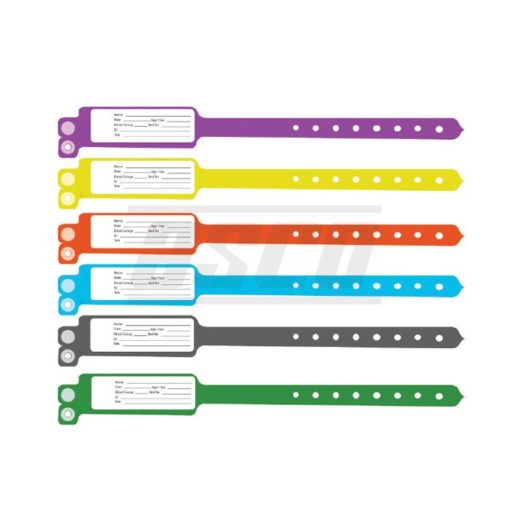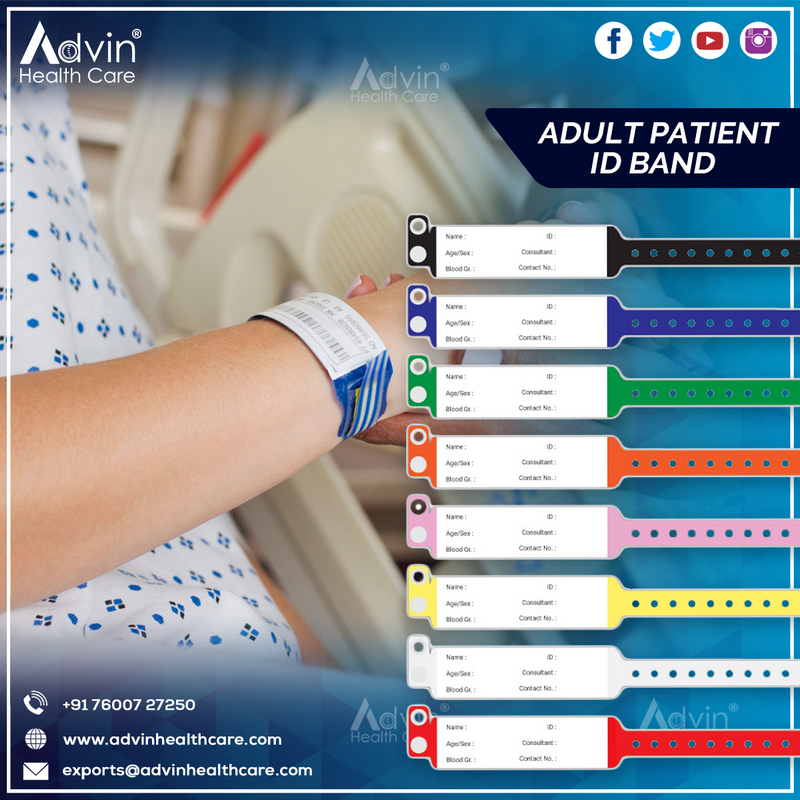The Purpose of Patient Identification Band in Optimizing Hospital Operations
The Purpose of Patient Identification Band in Optimizing Hospital Operations
Blog Article
Exploring the Different Kinds Of Patient Identification Band Made Use Of in Medical Facilities
In the detailed globe of medical care, the essential function of Patient Identification bands frequently goes unnoticed. These bands, varying from basic paper wristbands to advanced RFID bands, create the foundation of Patient safety and security protocols, guaranteeing accuracy in Patient Identification.
Recognizing the Relevance of Patient Identification Bands
While they might look like simple devices, Patient Identification bands play an important function in clinical centers. These bands serve as a crucial device for verifying Patient identification, protecting against medical mistakes associated to misidentification. The bands normally present crucial information such as the Patient's name, age, blood group, and any well-known allergic reactions. They allow healthcare experts to rapidly access this critical information, thus facilitating accurate and timely medical therapy. Patient Identification bands likewise aid in streamlining management jobs, guaranteeing exact record-keeping and billing. In spite of their simpleness, these bands personify the concept of Patient security, a foundation of top quality healthcare. Without them, the danger of clinical errors, and subsequently, Patient damage, may significantly increase.
Standard Paper Wristbands: Their Usage and Limitations
Typical paper wristbands have actually been a staple in Patient Identification across various medical facilities. While their usage prevails, they harbor specific constraints that may impact their effectiveness in Patient administration. This area will concentrate on the scope of their application and the intrinsic disadvantages linked with their usage.
Paper Wristbands: Usage Range
In the world of Patient Identification, paper wristbands have actually long held a vital duty. These bands are commonly utilized in outpatient setups, where the Patient's remain is short-lived. The wristbands have vital information such as the Patient's name, date of birth, and an one-of-a-kind Identification number. This straightforward, yet reliable system, enables physician to promptly and accurately determine patients, guaranteeing the right treatment is carried out. Paper wristbands are likewise used in emergency situation circumstances, where fast Identification is paramount. Their usage reaches occasions like blood donation drives and mass vaccination programs, even more emphasizing their convenience. Regardless of improvements in modern technology, the humble paper wristband stays a trustworthy and cost-effective solution for Patient Identification in various medical care circumstances.
Limitations of Paper Wristbands
Regardless of their prevalent usage, paper wristbands are not without their disadvantages. Their physical sturdiness is one of the significant restrictions. Exposure to water, sweat, or rough handling can render them unreadable or perhaps create them to disintegrate. Furthermore, paper wristbands often lack the technical abilities of even more modern-day options, such as barcoding or RFID chips, limiting their functionality to simply displaying written details. The failure to update or customize the data on the wristband is an additional drawback. If the information is handwritten, legibility can be endangered, leading to possible misidentification. Ultimately, paper wristbands can trigger discomfort or skin irritability to some clients, especially when worn for extended periods.
Barcoded Wristbands: Advancements in Patient Identification
While Patient Identification has long been a crucial element of healthcare, the development of barcoded wristbands signifies a substantial leap forward. These bands utilize the simpleness of barcoding modern technology, enabling for Patient information to be rapidly scanned and accessed. They boost the speed and accuracy of Patient Identification, decreasing the risk of clinical mistakes associated to misidentification.
Superhigh Frequency Identification (RFID) Bands: a Step Towards Futuristic Healthcare
The development of Patient Identification bands has produced the appearance of Radio Regularity Identification (RFID) Bands (patient identification band). These ingenious gadgets existing crucial advantages for health care centers, providing a more reliable and technologically progressed means of Patient Identification. The application of RFID our website in health care is a considerable step in the direction of a more advanced method to Patient monitoring and safety and security
Comprehending RFID Bands

RFID Bands: Secret Advantages
Primarily, these bands improve Patient safety by giving precise, immediate Identification, thus decreasing clinical mistakes. RFID bands can keep a large quantity of Patient information, including clinical history and allergic reactions, making it possible for individualized care. On the whole, RFID bands stand for a significant advancement in Patient Identification technology, profiting both patients and health care companies.
Implementing RFID in Health Care
As we enter a technologically advanced period, the execution of RFID bands in medical care comes her comment is here to be progressively essential. These bands give a smooth method to track and determine clients, ensuring their safety click for more and security and enhancing performance in treatment procedures. RFID bands offer many advantages over typical Identification approaches. They can keep a huge quantity of information, including the Patient's case history and therapy strategies, which can be easily accessed by doctor. This information assists physicians make educated decisions regarding the Patient's therapy strategy. In addition, RFID bands minimize clinical mistakes by supplying precise Patient Identification, which is essential in stopping misdiagnosis or wrong medicine administration. Therefore, the implementation of RFID bands is a considerable step towards boosting Patient safety and medical care delivery.

Color-Coded Wristbands: Helping in Quick and Accurate Medical Diagnosis
In the bustling setting of a clinical center, color-coded wristbands have actually emerged as important devices for swift and precise Identification of a patient's medical problem. These wristbands, put on by clients, carry specific colors that correspond to different medical conditions or standings. This system is created to use prompt aesthetic hints to medical care suppliers, improving Patient safety and security and care top quality.
Approaches for Effective Application and Management of Patient ID Bands
Accomplishing optimum use Patient Identification bands requires a well-structured strategy for their implementation and monitoring. The very first step entails training all health employees on the importance of correctly applying and reviewing these bands. Second of all, healthcare facilities need to systematize making use of ID bands across all divisions, making sure uniformity and decreasing disparities. Regular audits needs to be conducted to validate adherence to plans and to rectify any type of incongruities. Patient education and learning is additionally important; clients should recognize the objective of the bands and the need for their consistent wear. patient identification band. It's necessary to have a back-up strategy in location, such as barcode scanning or biometrics, to make sure that Patient Identification is never jeopardized.
Conclusion
Patient Identification bands are important in clinical centers to ensure security and precision. Reliable implementation and administration of these bands can considerably decrease medical errors, boost efficiency, and enhance overall Patient treatment.
These bands, varying from simple paper wristbands to sophisticated RFID bands, form the foundation of Patient safety and security methods, ensuring accuracy in Patient Identification.The advancement of Patient Identification bands has actually brought concerning the introduction of Radio Frequency Identification (RFID) Bands. Generally, RFID bands stand for a considerable advancement in Patient Identification innovation, profiting both individuals and healthcare providers.
RFID bands lower medical errors by offering exact Patient Identification, which is important in preventing misdiagnosis or incorrect medicine administration. Patient education and learning is additionally essential; patients have to understand the objective of the bands and the demand for their continuous wear.
Report this page